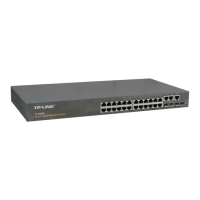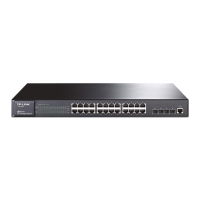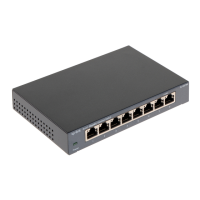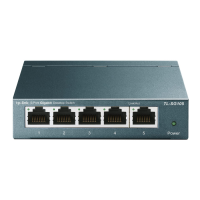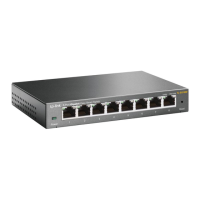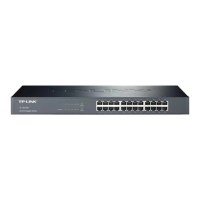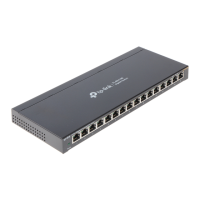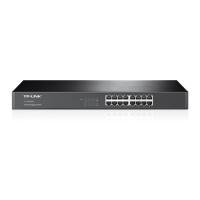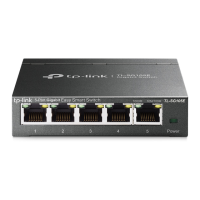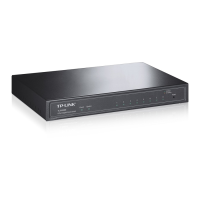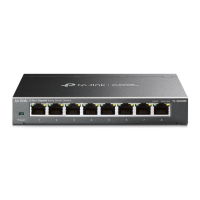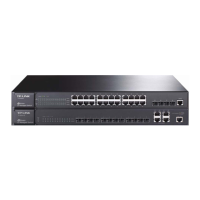
Do you have a question about the TP-Link TL-SG5412F and is the answer not in the manual?
| MAC address table | 8000 entries |
|---|---|
| Jumbo frames support | Yes |
| Maximum data transfer rate | 1 Gbit/s |
| Supported data transfer rates | 10, 100, 1000Mbps |
| Fan | 0 |
| Wi-Fi | No |
| Diagnostics | VCT |
| Management platform | SNMP, RMON, WEB/CLI/Telnet |
| Authentication method | 802.1X, Radius |
| Packet transfer speed | 17.99Mpps |
| Connectivity technology | Wired |
| Networking standards | IEEE 802.1D, IEEE 802.1p, IEEE 802.1Q, IEEE 802.1s, IEEE 802.1w, IEEE 802.1x, IEEE 802.3, IEEE 802.3ab, IEEE 802.3ad, IEEE 802.3i, IEEE 802.3u, IEEE 802.3x, IEEE 802.3z |
| Ethernet LAN data rates | 10, 100, 1000 Mbit/s |
| Copper ethernet cabling technology | 1000BASE-T, 100BASE-TX, 10BASE-T |
| DHCP features | DHCP client |
| Security algorithms | SSH, SSL/TLS |
| Switch type | Managed |
| Switch layer | L2 |
| Console port | RJ-45 |
| Fiber optic connector | SFP |
| SFP/SFP+ slots quantity | 12 |
| Basic switching RJ-45 Ethernet ports quantity | 4 |
| Fiber ethernet cabling technology | 100BASE-FX |
| AC input voltage | 100 - 240 V |
| AC input frequency | 50 - 60 Hz |
| Stackable | - |
| Form factor | 1U |
| Certification | CE, FCC |
| Product color | Black |
| Compatible operating systems | Windows 98SE, NT, 2000, XP, Vista, Windows 7\\r MAC OS\\r NetWare\\r UNIX\\r Linux |
| Storage temperature (T-T) | -40 - 70 °C |
| Operating temperature (T-T) | 0 - 40 °C |
| Storage relative humidity (H-H) | 5 - 90 % |
| Operating relative humidity (H-H) | 10 - 90 % |
| Depth | 260 mm |
|---|---|
| Width | 440 mm |
| Height | 44 mm |
Identifies the target audience for the user guide, focusing on network managers.
Explains the typographical conventions and symbols used throughout the manual.
Outlines the structure and content of each chapter in the user guide.
Provides a general description of the TL-SG5428/TL-SG5412F JetStream L2 Managed Switch.
Details the key features and capabilities of the switch, including resiliency, Layer 2, QoS, and security.
Describes the physical layout of the switch, including front and rear panels.
Guides users on how to access the switch's web management interface using its default IP address.
Explains how to navigate the main setup menu after successfully logging into the switch.
Covers configuration of system properties like summary, description, time, and IP settings.
Details how to configure user accounts, access levels, and passwords for switch management.
Provides functions for managing configuration files, firmware upgrades, system reboot, and reset.
Offers security measures for remote login to enhance configuration management security.
Explains how to configure basic port settings, mirroring, security, and isolation.
Covers Link Aggregation Group (LAG) configuration for increased bandwidth and reliability.
Details how to monitor network traffic and analyze port statistics for performance and troubleshooting.
Manages the MAC address table, including static, dynamic, and filtering addresses.
Explains the configuration and operation of IEEE 802.1Q VLANs for network segmentation.
Describes how to classify VLANs based on network protocols like IP, IPX, etc.
Details the implementation of VLAN-VPN for secure private network connections.
Covers the GARP VLAN Registration Protocol for automatic VLAN registration and propagation.
Explains the setup and benefits of Private VLANs for Layer 2 separation and resource saving.
Configures the Spanning Tree Protocol globally, including version and parameters.
Manages Multiple Spanning Tree Protocol instances, mapping VLANs to specific spanning trees.
Provides security functions to protect against malicious attacks on STP features.
Manages multicast group membership by listening to IGMP messages between hosts and routers.
Covers configuration of multicast IP addresses and tables for efficient stream delivery.
Allows configuration of multicast filter rules to restrict user access to multicast programs.
Manages Quality of Service by classifying traffic and mapping it to priority queues.
Controls network traffic flow using rate limiting and storm control features.
Configures Voice VLANs to prioritize voice data streams and ensure quality.
Allows configuration of time-ranges for applying ACL rules based on specific schedules.
Covers the creation and management of Access Control Lists (ACLs) for packet filtering.
Defines policies that combine ACL rules with actions to control data packets.
Binds configured policies to specific ports or VLANs to enforce access control rules.
Binds IP, MAC, VLAN ID, and port information to control network access.
Detects and filters ARP packets to prevent network attacks like spoofing.
Implements port-based network access control for user authentication and security.
Configures SNMP settings, including views, groups, users, and communities.
Sets up notification mechanisms to alert the management station about important network events.
Provides remote monitoring capabilities for network traffic statistics and alarms.
Configures LLDP parameters globally on the device for neighbor discovery.
Allows viewing of local device and neighbor information discovered via LLDP.
Enables Neighbor Discovery Protocol for gathering information about directly connected network devices.
Facilitates topology discovery by collecting NDP information and connection details.
Manages cluster configuration, including roles, summary, member settings, and topology.
Monitors switch utilization status for CPU and memory, displaying data graphically.
Records, classifies, and manages system logs for monitoring and troubleshooting.
Provides tools for diagnosing device issues, including cable testing and loopback tests.
Offers network diagnostic tools like Ping and Tracert to test connectivity and reachability.
Details the necessary hardware connections for FTP firmware maintenance.
Guides users through configuring Hyper Terminal for managing the switch.
Explains the process of downloading firmware to the switch using the bootUtil menu.
Provides step-by-step instructions for installing the 802.1X client software.
Details the configuration steps for the 802.1X client software after installation.

